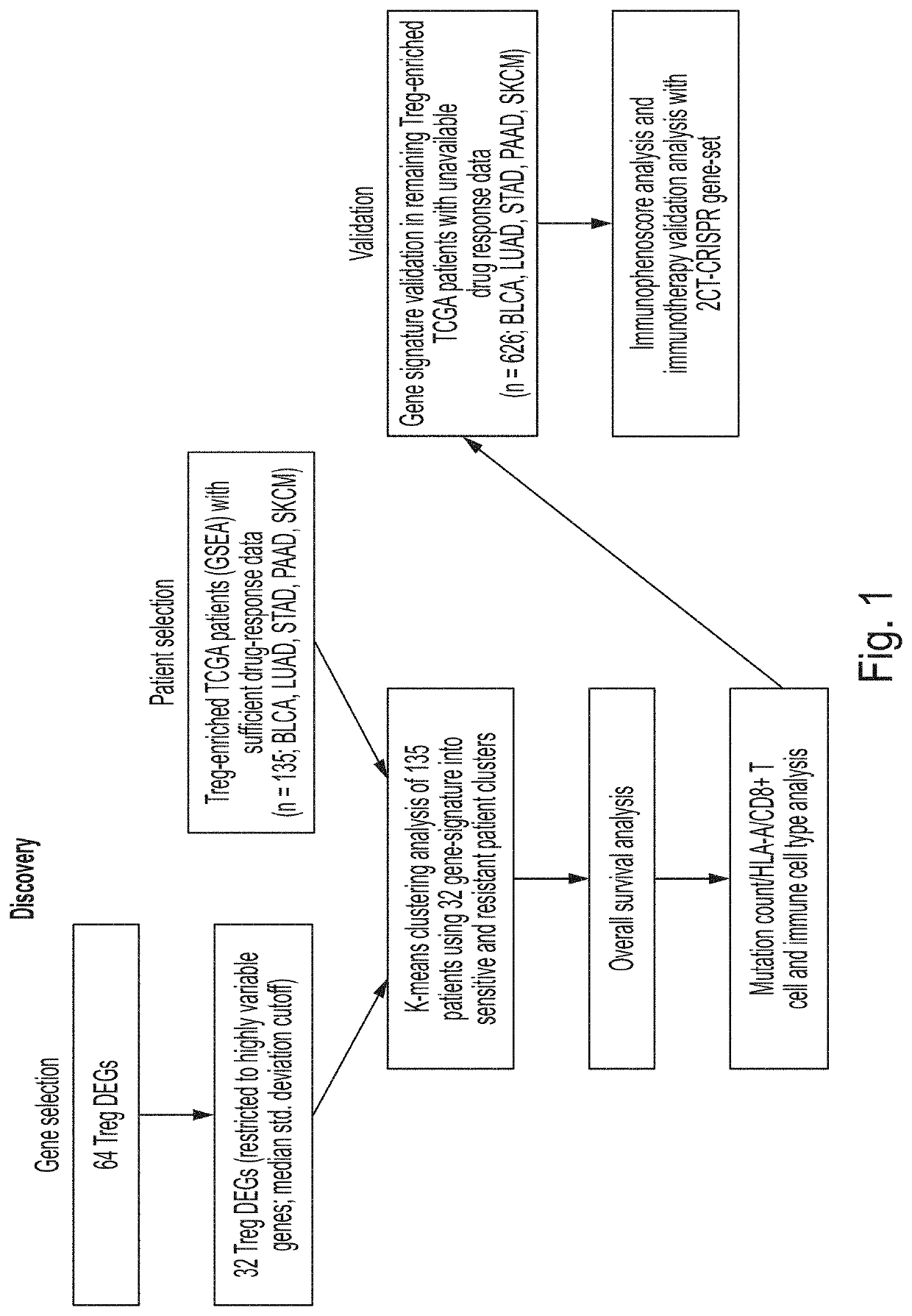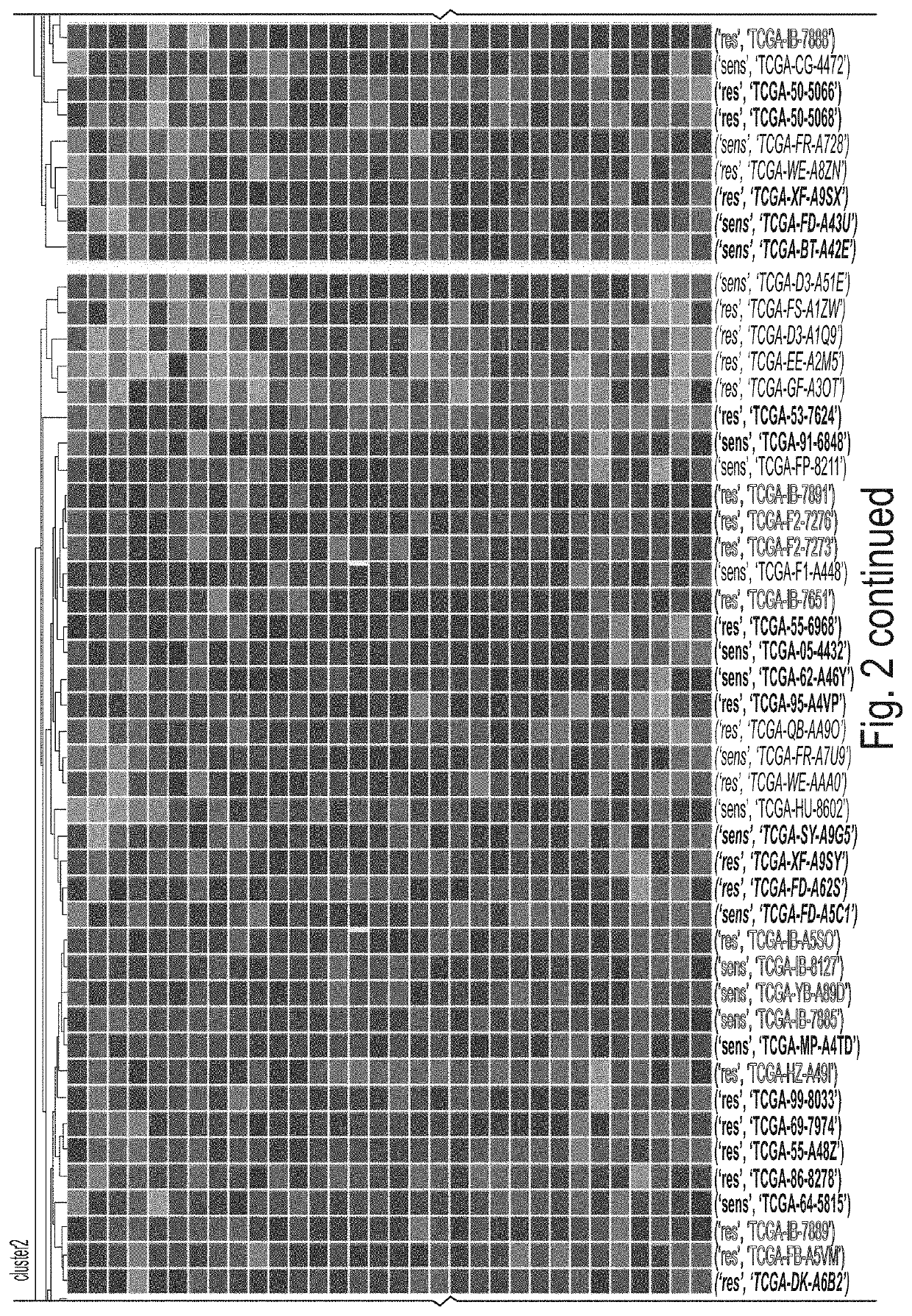Immune Gene Expression Signature in Treg Enriched Tumor Samples
- Summary
- Abstract
- Description
- Claims
- Application Information
AI Technical Summary
Benefits of technology
Problems solved by technology
Method used
Image
Examples
Embodiment Construction
inventors have discovered that an omics signature for Treg-enriched tumor samples can be established that has significant predictive and prognostic capacity with respect to tumor immunogenicity, chemosensitivity of the tumor to treatment, and / or overall patient survival.
[0023]More specifically, the inventors analyzed RNA-seq (e.g., qualitative and / or quantitative transcriptomics) data of Treg-enriched tumor samples to derive a pan-cancer gene signature in an effort to reconcile the inconsistent results of earlier Treg studies, and to better understand the variable clinical association of Tregs across alternative tumor contexts. As is shown in more detail below, an increased expression of a 32-gene signature in Treg-enriched tumor samples (n=135) was able to distinguish a cohort of patients associated with chemosensitivity and overall survival. This cohort was also enriched for CD8+ T cell abundance, as well as the antitumor M1 macrophage subtype. With a subsequent validation in a la...
PUM
| Property | Measurement | Unit |
|---|---|---|
| Strength | aaaaa | aaaaa |
| Gene expression profile | aaaaa | aaaaa |
| Immunogenicity | aaaaa | aaaaa |
Abstract
Description
Claims
Application Information
 Login to View More
Login to View More - R&D
- Intellectual Property
- Life Sciences
- Materials
- Tech Scout
- Unparalleled Data Quality
- Higher Quality Content
- 60% Fewer Hallucinations
Browse by: Latest US Patents, China's latest patents, Technical Efficacy Thesaurus, Application Domain, Technology Topic, Popular Technical Reports.
© 2025 PatSnap. All rights reserved.Legal|Privacy policy|Modern Slavery Act Transparency Statement|Sitemap|About US| Contact US: help@patsnap.com



